
The Enchanting Saint-Étienne: A Journey Through Toulouse's Historic Heart
Explore Saint-Étienne in Toulouse: A harmonious blend of history, culture, and charm, perfect for a tranquil escape in the heart of France's Pink City.
Saint-Étienne in Toulouse, France, is a captivating blend of history, culture, and charm. Nestled in the vibrant city of Toulouse, this neighbourhood offers a serene escape from the bustling urban life, while still providing easy access to the city's main attractions. The area is named after the stunning Saint-Étienne Cathedral, a masterpiece of Gothic and Romanesque architecture that stands as a testament to the city's rich heritage. As you wander through the cobbled streets of Saint-Étienne, you'll be greeted by an array of picturesque buildings, each with its own unique story. The neighbourhood is home to an assortment of boutique shops, charming cafes, and exquisite restaurants, making it the perfect place to indulge in some local cuisine or simply enjoy a leisurely afternoon of people-watching. The friendly locals add to the welcoming atmosphere, making you feel right at home. Saint-Étienne is also a cultural hub, with numerous art galleries, museums, and cultural centers scattered throughout the area. The neighbourhood's close proximity to the Garonne River provides an ideal setting for a relaxing stroll along the riverbanks, where you can take in the scenic views and perhaps even catch a glimpse of a stunning sunset. Whether you're a history buff, a foodie, or simply looking for a tranquil place to unwind, Saint-Étienne has something to offer every traveler.
Local tips in Saint-Étienne
- Visit Saint-Étienne Cathedral early in the morning to avoid crowds and enjoy a peaceful experience.
- Try the local specialty, cassoulet, at one of the neighbourhood's traditional restaurants.
- Take a leisurely walk along the Garonne River during sunset for breathtaking views.
- Check out local art galleries and cultural centers to immerse yourself in the neighbourhood's vibrant arts scene.
- Don't forget to explore the boutique shops for unique souvenirs and local crafts.
The Enchanting Saint-Étienne: A Journey Through Toulouse's Historic Heart
Saint-Étienne in Toulouse, France, is a captivating blend of history, culture, and charm. Nestled in the vibrant city of Toulouse, this neighbourhood offers a serene escape from the bustling urban life, while still providing easy access to the city's main attractions. The area is named after the stunning Saint-Étienne Cathedral, a masterpiece of Gothic and Romanesque architecture that stands as a testament to the city's rich heritage. As you wander through the cobbled streets of Saint-Étienne, you'll be greeted by an array of picturesque buildings, each with its own unique story. The neighbourhood is home to an assortment of boutique shops, charming cafes, and exquisite restaurants, making it the perfect place to indulge in some local cuisine or simply enjoy a leisurely afternoon of people-watching. The friendly locals add to the welcoming atmosphere, making you feel right at home. Saint-Étienne is also a cultural hub, with numerous art galleries, museums, and cultural centers scattered throughout the area. The neighbourhood's close proximity to the Garonne River provides an ideal setting for a relaxing stroll along the riverbanks, where you can take in the scenic views and perhaps even catch a glimpse of a stunning sunset. Whether you're a history buff, a foodie, or simply looking for a tranquil place to unwind, Saint-Étienne has something to offer every traveler.
Iconic landmarks you can’t miss
Saint Stephen's Cathedral
Discover the breathtaking beauty and rich history of Saint Stephen's Cathedral, a must-visit Gothic masterpiece in the heart of Toulouse, France.

Jardin Royal
Immerse yourself in the serene beauty of Jardin Royal, a picturesque garden oasis in the heart of Toulouse, perfect for relaxation and exploration.

Monument of the Combatants of Haute-Garonn
Discover the Monument of the Combatants of Haute-Garonne in Toulouse, a striking war memorial celebrating bravery and sacrifice amidst tranquil gardens.
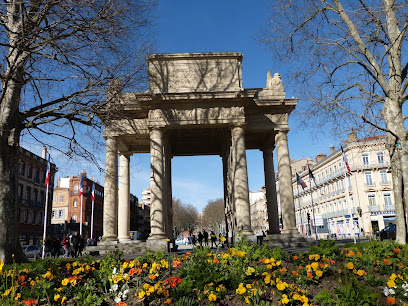
Monument à la gloire de la Résistance
Explore the Monument à la gloire de la Résistance in Toulouse, a serene memorial dedicated to the bravery of those who fought for freedom amidst turmoil.
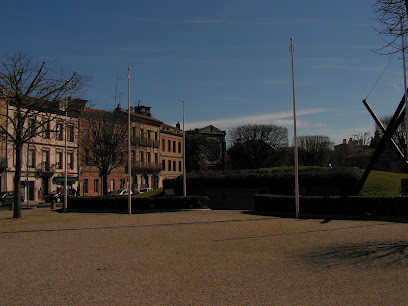
Paroisse Saint Etienne Paroisse
Explore the architectural beauty and serene atmosphere of Paroisse Saint Etienne, a spiritual gem in the heart of Toulouse.

Fontaine Griffoul
Experience the beauty and history of Toulouse at Fontaine Griffoul, a stunning cultural landmark that enchants every visitor.

Statue Diane
Explore the beauty and history of Toulouse at the stunning Statue Diane, a remarkable landmark celebrating art and culture.

Place Saint-Étienne
Discover the enchanting Place Saint-Étienne in Toulouse, a vibrant town square filled with stunning architecture, delightful cafes, and rich local culture.

Unmissable attractions to see
Pont Neuf
Explore the stunning Pont Neuf in Toulouse, a historical bridge offering breathtaking views, vibrant surroundings, and a glimpse into French culture.

Musée des Augustins
Explore the Musée des Augustins in Toulouse, a captivating art museum in a historic convent, showcasing treasures from the Middle Ages to the 20th century.

Georges Bemberg’s Foundation — Hotel of Assézat
Explore the Georges Bemberg Foundation in Toulouse, where art, history, and stunning architecture converge.

Essential places to dine
OFFICINA GUSTO
Experience authentic Italian cuisine at Officina Gusto in Toulouse – where every dish tells a story.

Restaurant Une Table à Deux
Experience authentic French cuisine at Une Table à Deux in Toulouse - where every meal is a delightful journey into culinary excellence.

Chez Navarre
Experience authentic French cuisine at Chez Navarre in Toulouse, where seasonal flavors meet classic recipes in an inviting atmosphere.

Hortùs Toulouse
Discover exceptional haute French cuisine at Hortùs Toulouse - where tradition meets innovation in an unforgettable dining experience.

L'Emulsion
Experience the finest blend of French and Mediterranean cuisine at L'Emulsion in Toulouse - where every meal is a culinary masterpiece.

Le Perche Pinte
Experience authentic French cuisine at Le Perche Pinte - a culinary gem in Toulouse offering seasonal dishes and exquisite wines.

SEPT
Experience the pinnacle of haute French cuisine at SEPT in Toulouse - where every dish tells a story.

La Gazette
Discover La Gazette in Toulouse: A charming bistro serving exquisite French cuisine with a modern twist in a warm and inviting atmosphere.

Térèse
Experience authentic French cuisine at Térèse - A culinary gem nestled in the heart of Toulouse.

Garçon sauvage
Experience the vibrant flavors of Toulouse at Garçon Sauvage – where exquisite cuisine meets lively ambiance.
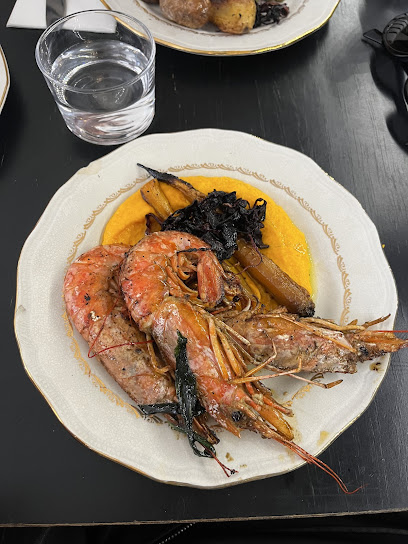
Markets, malls and hidden boutiques
Centre Commercial Espace Saint Georges
Explore Espace Saint Georges, Toulouse's premier shopping mall, blending retail therapy, dining, and entertainment in one vibrant location.

Louis Vuitton Toulouse
Discover the luxurious world of Louis Vuitton Toulouse, where exquisite leather goods and iconic fashion accessories await.

Eden Park
Explore Eden Park in Toulouse for stylish fashion selections including men's, women's, and children's clothing in a chic boutique atmosphere.

Au Bonheur Des Dames
Discover vintage treasures and timeless fashion at Au Bonheur Des Dames, the premier vintage clothing store in Toulouse.

Toulouse Boutiques
Explore the charm of Toulouse Boutiques, where unique gifts and local artisan treasures await your discovery in the heart of Toulouse.

Antoine et Lili
Discover the essence of French chic at Antoine et Lili, a vibrant women's clothing boutique in the heart of Toulouse.

LILYAKÉ
Discover unique fashion at LILYAKÉ, a charming boutique in Toulouse offering a stylish collection that captures the city's vibrant culture.
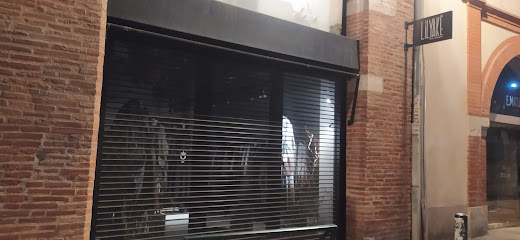
l'iconoclaste
Explore l'iconoclaste, a unique clothing store in Toulouse, where fashion meets local artistry in a charming shopping experience.

Anahita
Discover unique fashion at Anahita, a stylish clothing store in Toulouse that offers a curated selection of trendy apparel and accessories.
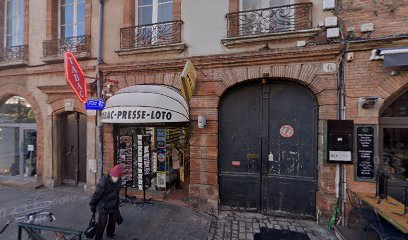
Toulouse Boutiques marketplace
Discover the charm of Toulouse Boutiques Marketplace, where local craftsmanship meets diverse shopping experiences in the heart of Toulouse.
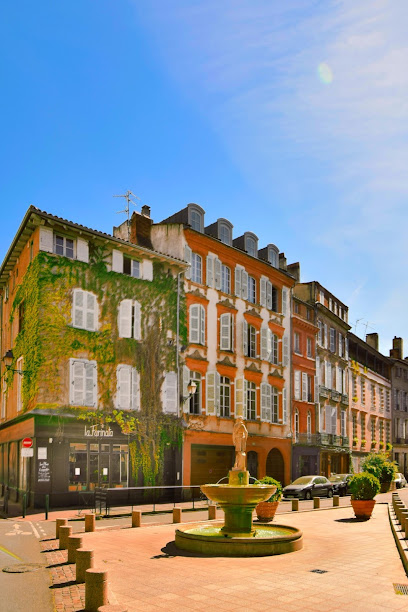
Essential bars & hidden hideouts
The London Town English Pub Toulouse
Experience the best of British pub culture at The London Town English Pub in Toulouse, offering delicious food, refreshing drinks, and live sports.

Moloko
Experience the vibrant nightlife of Toulouse at Moloko, your go-to cocktail bar and club for unforgettable evenings filled with music and delicious drinks.

L*Agence
Experience the vibrant nightlife of Toulouse at L'Agence, an elegant cocktail bar offering exquisite drinks and haute French cuisine.

Le Sylène
Discover Le Sylène, a stylish bar in Toulouse offering a diverse drink menu and a cozy atmosphere, perfect for unwinding with friends.

Le Seventies
Discover the lively atmosphere of Le Seventies, a must-visit pub in Toulouse offering craft drinks, delicious food, and a fun pool hall experience.

l'Echanson
Discover the charm of l'Echanson in Toulouse - a cozy bar offering a delightful selection of beverages and a welcoming atmosphere.

Sauvage Social Pub
Discover Toulouse's nightlife at Sauvage Social Pub, a lively venue offering live music, dancing, and delicious food in a vibrant atmosphere.
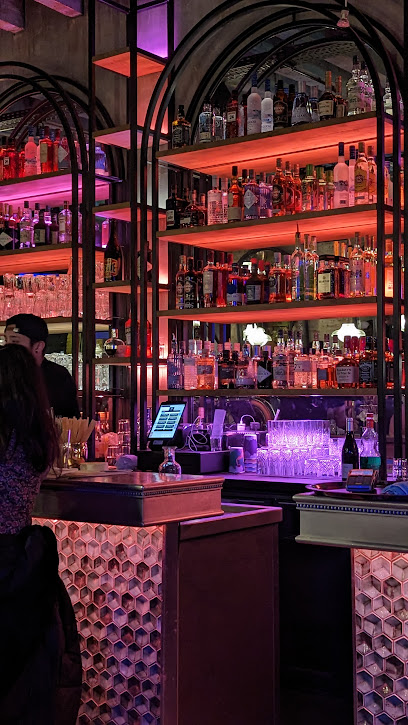
Marché Noir
Discover the lively ambiance of Marché Noir, Toulouse's go-to bar for drinks, entertainment, and unforgettable nights out.

Unic-Bar
Explore the vibrant nightlife and culinary offerings at Unic-Bar, a trendy bar and restaurant in the heart of Toulouse.

Cosy Toulouse
Discover the vibrant atmosphere of Cosy Toulouse, a welcoming bar offering exquisite drinks and local flavors in the heart of Toulouse.

Local Phrases
-
- HelloBonjour
[bon-zhoor] - GoodbyeAu revoir
[oh ruh-vwar] - YesOui
[wee] - NoNon
[nohn] - Please/You're welcomeS'il vous plaît/De rien
[seel voo pleh/duh ryen] - Thank youMerci
[mehr-see] - Excuse me/SorryExcusez-moi/Désolé
[ehk-skew-zay mwah/dey-zoh-lay] - How are you?Comment ça va?
[koh-mohn sa va] - Fine. And you?Bien. Et toi?
[byen. ay twah] - Do you speak English?Parlez-vous anglais?
[pahr-lay voo ahn-glay] - I don't understandJe ne comprends pas
[zhuh nuh kohm-prahnd pah]
- HelloBonjour
-
- I'd like to see the menu, pleaseJe voudrais voir le menu, s'il vous plaît
[zhuh voo-dray vwahr luh meh-noo, seel voo pleh] - I don't eat meatJe ne mange pas de viande
[zhuh nuh mahnj pah duh vyand] - Cheers!Santé!
[sahn-tay] - I would like to pay, pleaseJe voudrais payer, s'il vous plaît
[zhuh voo-dray pay-ay, seel voo pleh]
- I'd like to see the menu, pleaseJe voudrais voir le menu, s'il vous plaît
-
- Help!Au secours!
[oh suh-koor] - Go away!Allez-vous en!
[ah-lay vooz ahn] - Call the Police!Appelez la police!
[ah-peh-lay lah poh-lees] - Call a doctor!Appelez un médecin!
[ah-peh-lay uh meh-deh-sahn] - I'm lostJe suis perdu
[zhuh swee pair-doo] - I'm illJe suis malade
[zhuh swee mah-lahd]
- Help!Au secours!
-
- I'd like to buy...Je voudrais acheter...
[zhuh voo-dray zshet-shay] - I'm just lookingJe regarde juste
[zhuh ruh-gard zhoost] - How much is it?Combien ça coûte?
[kohm-byen sa koot] - That's too expensiveC'est trop cher
[say troh shair] - Can you lower the price?Pouvez-vous baisser le prix?
[poo-vay voo bay-say luh pree]
- I'd like to buy...Je voudrais acheter...
-
- What time is it?Quelle heure est-il?
[kell er ay teel] - It's one o'clockIl est une heure
[eel ay zewn er] - Half past (10)Dix heures et demie
[dees er ay duh-mee] - MorningMatin
[mah-tan] - AfternoonAprès-midi
[ah-pray mee-dee] - EveningSoir
[swahr] - YesterdayHier
[yehr] - TodayAujourd'hui
[oh-zhoor-dwee] - TomorrowDemain
[duh-mahn] - 1Un
[uhn] - 2Deux
[duh] - 3Trois
[twah] - 4Quatre
[katr] - 5Cinq
[sank] - 6Six
[sees] - 7Sept
[set] - 8Huit
[weet] - 9Neuf
[nurf] - 10Dix
[dees]
- What time is it?Quelle heure est-il?
-
- Where's a/the...?Où est...?
[oo ay] - What's the address?Quelle est l'adresse?
[kell ay la-dress] - Can you show me (on the map)?Pouvez-vous me montrer (sur la carte)?
[poo-vay voo muh mon-tray (soor lah kart)] - When's the next (bus)?Quand est le prochain (bus)?
[kahn ay luh proh-shahn (boos)] - A ticket (to ....)Un billet (pour ....)
[uhn bee-yay (poor)]
- Where's a/the...?Où est...?
History of Saint-Étienne
-
Saint-Étienne, one of the oldest neighborhoods in Toulouse, has roots that trace back to the Roman period. Evidence of Roman settlements in Toulouse, known as Tolosa, suggests that the area was significant for trade and military routes. The neighborhood takes its name from the Church of Saint-Étienne, which has played a pivotal role in the area's religious and cultural development since its establishment in the 5th century.
-
During the medieval period, Saint-Étienne began to flourish as a residential area. The neighborhood became known for its vibrant community, which included artisans and merchants. The construction of the Church of Saint-Étienne in the 12th century marked a significant architectural achievement of the time, influencing the Romanesque style in the region. The church remains a focal point of the neighborhood, symbolizing its historical importance.
-
The Renaissance period brought about a cultural revival in Toulouse, and Saint-Étienne was no exception. The neighborhood witnessed the growth of humanism and the arts, attracting artists and intellectuals. During this time, the architecture of the area evolved, with the introduction of Renaissance-style buildings that enhanced its character. Notably, the influence of the wealthy merchant class led to the establishment of grand residences and public spaces.
-
The 19th century marked a turning point for Saint-Étienne as industrialization swept through Toulouse. With the rise of factories and workshops, the neighborhood transformed into an urban center, accommodating a growing population of workers. This period saw significant social changes, with a mix of different cultures and communities contributing to the rich tapestry of life in Saint-Étienne.
-
The 20th century brought both challenges and opportunities for Saint-Étienne. The effects of World War I and II were felt in the neighborhood, leading to a decline in population and economic activity. However, post-war reconstruction efforts revitalized the area. The development of public transport and infrastructure improved accessibility, making Saint-Étienne an attractive location for new businesses and residents.
-
Today, Saint-Étienne is a vibrant blend of history and modernity. The neighborhood has embraced its cultural heritage while adapting to contemporary needs. The area is known for its lively markets, cafes, and artistic events, reinforcing its status as a cultural hub of Toulouse. The preservation of historical sites, alongside the introduction of modern amenities, reflects the ongoing evolution of this historic neighborhood.
Saint-Étienne Essentials
-
Saint-Étienne is easily accessible from other neighborhoods in Toulouse. The neighborhood is well-connected by public transportation. You can take the Metro Line A to the station 'Jean-Jaurès' and transfer to Line B, which stops at 'Saint-Étienne' station. Buses also serve the area, with several lines connecting to the city center and other neighborhoods. If you're arriving by train, the main Toulouse Matabiau station is approximately 15 minutes away by public transport.
-
Saint-Étienne is primarily a residential neighborhood, and many attractions can be explored on foot. The public transport network includes Metro, buses, and trams, making it convenient for longer journeys. Bicycles can be rented from local services, and the city has dedicated bike lanes for safer cycling. Taxis and rideshare services are also available for those who prefer a more direct route.
-
Saint-Étienne is generally a safe neighborhood for tourists, but it is wise to stay cautious. Avoid poorly lit streets at night and keep valuables secure. Areas around the main transport hubs can see petty crime, so remain vigilant in crowded places. While there are no specific high-crime areas targeting tourists, it’s advisable to stay aware of your surroundings, especially after dark.
-
In case of an emergency, dial 112 for immediate assistance. This number connects you to police, fire, and medical services. The local hospital, CHU de Toulouse, is equipped to handle emergencies. Always have travel insurance that includes medical coverage. For minor health issues, look for pharmacies, which are readily available and can provide over-the-counter medications.
-
Fashion: Do dress comfortably and consider the local climate; however, avoid overly revealing clothing in public spaces. Religion: Do respect local customs and traditions; when visiting churches, dress modestly and cover your shoulders. Public Transport: Do be courteous, give up your seat for the elderly, and avoid loud conversations. Don't eat or drink on public transport. Greetings: Do greet people with a friendly 'Bonjour' and a smile. Eating & Drinking: Do try local specialties like cassoulet and accept food offerings graciously. Don't waste food or display dissatisfaction with meals, as this can be considered rude.
-
To experience Saint-Étienne like a local, visit the local markets such as the Marché des Carmes and sample fresh produce and regional delicacies. Engage with vendors and locals to learn more about their crafts and stories. Explore the neighborhood's parks for a glimpse of daily life. Attend local festivals or events whenever possible to immerse yourself in the community spirit.
Nearby Cities to Saint-Étienne
-
Things To Do in El Serrat
-
Things To Do in Ordino
-
Things To Do in Arinsal
-
Things To Do in Soldeu
-
Things To Do in Canillo
-
Things To Do in La Massana
-
Things To Do in Encamp
-
Things To Do in Pas de la Casa
-
Things To Do in Escaldes-Engordany
-
Things To Do in Andorra la Vella
-
Things To Do in Lourdes
-
Things To Do in Montpellier
-
Things To Do in Girona
-
Things To Do in Bordeaux
-
Things To Do in Huesca













